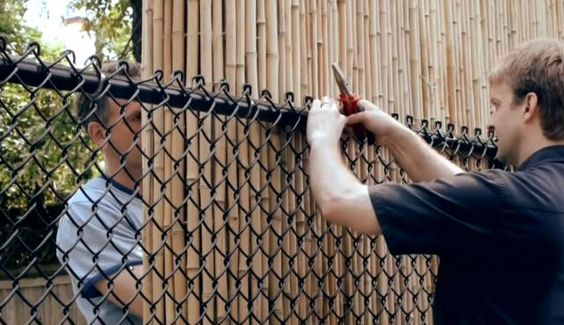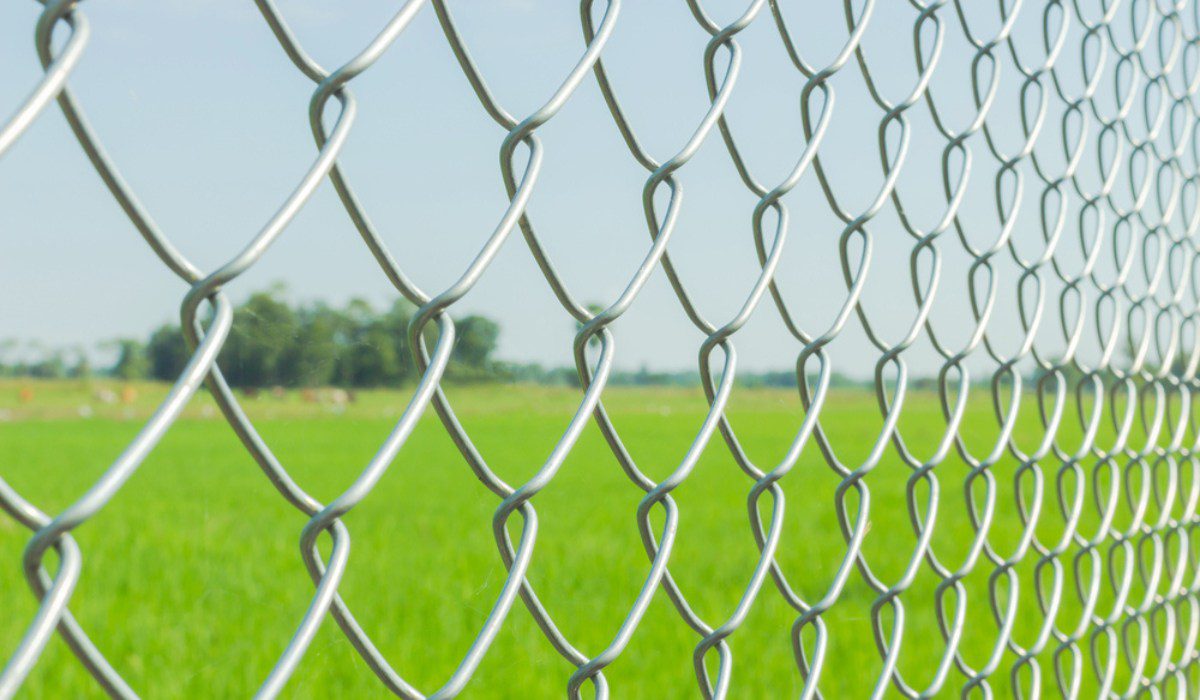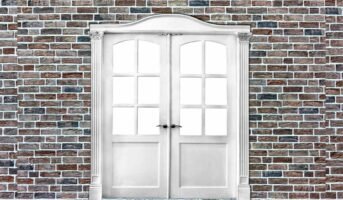One of the most common forms of fence is the chain link fence, a set of top rail and steel supports referred to as the framework and the fabric, with individual wire strands woven into a diamond pattern. The fabric is connected to the structure by additional parts called fittings, which also allow each fence line to begin and end.
A chain link fence is also known as a cyclone fence or a hurricane fence. It is the preferred option for people wishing to fence in their yards because of its adaptability and low cost. Businesses that offer security frequently opt for chain link fences.
Numerous variations in height, colour, and grade make it easy to see why chain link fencing is the market’s most popular type of fence.

Source: Pinterest
Chainlink fence: What are the available heights for chain link fences?
Chain link fencing is available at a wide range of heights. Manufacturers may design unique heights up to 20 feet tall and start with heights as low as three feet. Up to a height of eight feet, standard sizes increase by one foot. If a project requires it, every fence maker may create unique heights. Typically, custom height orders come with setup fees. Minimum total linear footage requirements may also apply.
Chainlink fence: Colours available
You picture a chain link fence as being silver or grey in hue. But did you know that it also comes in various other colours? Standard hues are white, green, black, and brown. Additionally, manufacturers provide the option of choosing bespoke colours for unique projects by colour-matching the hue of their material. Custom colours will incur setup fees from the manufacturer, much as custom heights. But most customers continue to use conventional ones.

Source: Pinterest
Silver or galvanised
The coating that covers the metal gives fences their grey or silver appearance. The most prevalent coating is galvanised. It shields the metal from the environment and keeps it from rusting.
It will oxidise, much like other metals that are exposed to the weather. After a few years, the shine disappears, and the hue changes to the drab grey you are accustomed to seeing.
Galvanised coatings can occasionally fall short of standards. Therefore, manufacturers provide an aluminised coating as a substitute. Most people could not distinguish between objects with the same hue to the untrained eye.
Brown, green and black
Manufacturers provide other colours because some homeowners dislike the cold, industrial effect of silver fences in their yards. These deeper hues are less conspicuous since they mix nicely with their environment. Compared to galvanised fences, they are more aesthetically beautiful. The typical shades are hunter green, black, and chocolate brown.
Manufacturers use identical steel posts and fabric as a typical galvanised fence. However, they are covered in a vinyl product or powder coating, supplying the colour as a result.
Compared to plain galvanised fences, colours cost extra. However, many localities demand a colour other than the galvanised coating to get an authorised fence permit.
Chainlink fence: Do different grades of chain link fences exist?
Chain link fences come in three different grades. Industrial, commercial, and residential. What distinguishes each grade? Two things determine the grade.
The thickness or gauge of the wire used to create the cloth. Likewise, the structure’s size used to build the fence is also essential. This pertains to the pipe’s diameter and wall thickness.
Fabric gauge
There are several gauges of chain link cloth. The gauge is based on how thick each wire strand is. The gauge number will be heavier and stronger the smaller it is.
For instance, fence fabric made of 9 gauge wire is more durable than fabric made of 11 gauge wire. Fabric gauges for residential fences range from 11.5 to 9. 8–9 gauge wire is used in commercial-grade fences.
Fabric for commercial chain link fences may be made from highly sturdy 6 gauge wire. However, when dealing with industrial quality applications, 9 gauge remains the most common size.
Fabric size
Size variations exist for fence fabric as well. Mesh size is determined by measuring the distance between each wire connection. 2′′ mesh is the most typical. There are various sizes, though.
There are modest mesh sizes available for specialised tasks. Some are weaved so closely together that there is only a 3/8′′ gap between the strands, like a chain mill on a suit of armour.
A common fence wall separates the stalls in dog kennels occasionally. Smaller 1′′ mesh may thus be utilised. Dogs will not be able to poke their noses through to the other side as a result.
Pipe size is important
The grade of the fence is also determined by the pipe size that was utilised to construct the framework. The framework is composed of three components. The end, corner and gate posts make up the terminal posts. The posts inserted in between the terminal posts are all called line posts.
The fence’s top rail is the horizontal rail that runs across the top. A bottom rail is an optional addition that may be fitted for added security and strength. It is uncommon in residential applications.
The diameters and wall thicknesses of each component of the framework are available in a variety of options. The structure will be more robust the bigger the diameter.
Chainlink fence: Why should you consider it as an option?

Source: Pinterest
Affordability
Installing a chain link on your property is relatively affordable. Chain link fence will be far less expensive per foot than PVC fence, for example, when comparing the pricing of the two materials. Additionally, wooden fences are less likely to deteriorate over time.
Quality
Generally speaking, chain link fences are quite uniform from product to product. This is why the overall cost is quite similar. Because of this, quality also stays quite comparable. There are discrepancies, however, in the quality of chain links and other materials like composite, PVC, or even wood. Aside from wood, several fences on the market now have a comparable level of quality due to their durability.
Installation
Most people believe that installing a chain link fence is simpler than installing any other kind of fence. After getting all the necessary components, erecting a chain link fence will not be too challenging if you prefer working on your own projects.
Another choice is to hire professionals to help you out. A customer may be confident that the fence is installed correctly and has a pleasant appearance in this way, but this might not always be the case.
This style of fence has the benefit of being simple to transport, erect, and dismantle.
FAQs
What is a chain link fence?
Chain link fencing is a commonly used, economical fence.
What are the major functions of chain link fences?
Chain link fences are a particularly popular option for houses with kids, pets or swimming pools since they require little upkeep.
Housing News Desk is the news desk of leading online real estate portal, Housing.com. Housing News Desk focuses on a variety of topics such as real estate laws, taxes, current news, property trends, home loans, rentals, décor, green homes, home improvement, etc. The main objective of the news desk, is to cover the real estate sector from the perspective of providing information that is useful to the end-user.
Facebook: https://www.facebook.com/housing.com/
Twitter: https://twitter.com/Housing
Email: [email protected]











